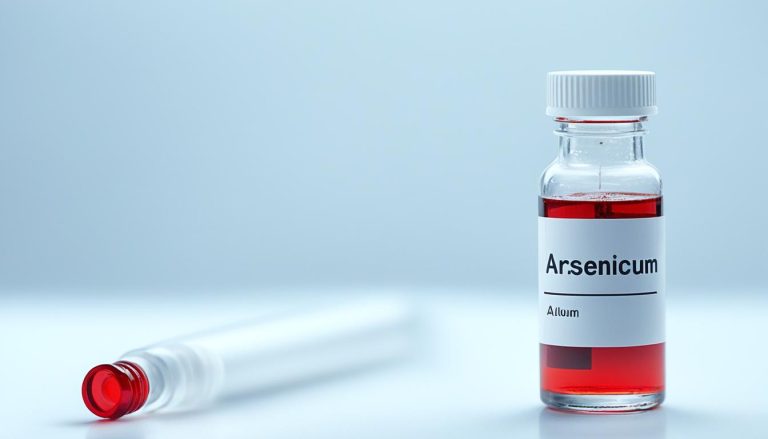Key Takeaways
| Method/Medication | Description | Source |
|---|---|---|
| Erythropoietins (EPOs) | Stimulate red blood cell production, used to treat anemia, but can have doping implications. | |
| EPO gene therapy | Experimental treatment aiming to increase red blood cell production. | |
| EPO mimetics | Mimic the effects of EPO, stimulating red blood cell production. | |
| Papaverine hydrochloride | Increases oxygen availability to the brain in stroke patients by enhancing cerebral blood flow. | |
| Almitrine bismesylate | Investigational drug for increasing oxygen levels in COVID-19 patients. | |
| Methylprednisolone | Corticosteroid that may improve oxygen levels, but the mechanism is not specified. | |
| Blood transfusions | Directly increase red blood cells, improving oxygen transport. | |
| Altitude simulation | Stimulates red blood cell production by simulating high altitude conditions. | |
| Hyperbaric oxygen therapy (HBOT) | Delivers 100% oxygen in a pressurized chamber, enhancing oxygen absorption. | |
| Supplemental oxygen | Delivered via oxygen tanks or concentrators. | |
| Hydration | Essential for efficient oxygen transport. | |
| Regular exercise | Improves lung capacity and cardiovascular system, enhancing oxygen delivery. | |
| Breathing exercises | Can expand airways and increase oxygen levels. |
Introduction
Maintaining adequate blood oxygen levels is super important for good health. Think of it like keeping your car’s gas tank full – without enough fuel, things just won’t run right. When your blood oxygen levels dip below normal, you get a condition called hypoxemia. Hypoxemia can cause a bunch of different symptoms, kind of like a check engine light in your body. These symptoms can be anything from headaches and feeling tired to more serious stuff like trouble breathing and even organ damage.
Think of the sources as your owner’s manual for understanding oxygen levels in your body. They talk about all kinds of ways to boost those levels, focusing on treating hypoxemia and getting that precious oxygen to your tissues and organs where it’s needed most.
Medications and Methods for Increasing Oxygen Levels
Introduction
Let’s break down the different ways doctors can help you increase those oxygen levels, drawing on the information we have from the sources.
Medications that Increase Red Blood Cell Production
Imagine your red blood cells as tiny delivery trucks, carrying oxygen throughout your body. If you don’t have enough trucks, the deliveries get delayed. These medications help your body build more of those little red trucks!
Erythropoietins (EPOs)
- Mechanism: EPOs, including erythropoietin, darbepoetin alfa, and epoetin alfa, are like construction foremen in your bone marrow. They tell your body to build more red blood cells.
- Medical Uses: Doctors use these mainly to treat folks with severe anemia, especially those struggling with chronic kidney disease.
- Doping Implications: Some athletes, looking for an edge, misuse EPOs to cheat. By increasing their oxygen-carrying capacity, they try to boost their performance, but this is dangerous and against the rules.
EPO Gene Therapy
- Mechanism: This is a super high-tech approach. It’s like installing a blueprint in your cells, telling them to make more red blood cells.
- Current Status: This is still in the experimental stages, like a brand new car being tested on the track.
EPO Mimetics
- Mechanism: These are clever little drugs that trick your body into thinking it’s getting EPO. This, in turn, ramps up red blood cell production.
- Examples and Applications: The sources don’t really dive into the specifics of these, so we’ll have to keep our eyes peeled for more info.
Medications that Affect Oxygen Delivery
Sometimes, the issue isn’t the number of delivery trucks but the roads they’re using. These medications help clear the path for those little red blood cells to get where they need to go!
Papaverine Hydrochloride
- Mechanism: Think of this as a traffic cop directing blood flow in your brain, making sure oxygen gets delivered efficiently.
- Medical Uses: Doctors have been studying its use in helping stroke patients recover. The results are promising!
Almitrine Bismesylate
- Mechanism: This one’s a bit like a detour sign for your blood. It closes down roads (blood vessels) in parts of your lungs that are low on oxygen, forcing the blood to take a different route to healthier areas.
- Potential Applications: Researchers are looking into using this to help folks with COVID-19 who are having trouble breathing.
Methylprednisolone
- Medical Uses: Methylprednisolone is a versatile drug, kind of like a Swiss Army knife for doctors. They use it for a variety of conditions, including allergies, arthritis, asthma, and certain blood problems.
- Potential Effect on Oxygen Levels: This drug might help improve your oxygen levels, but the sources don’t really explain how it does that. It’s a bit of a mystery!
Non-Pharmacological Methods
You don’t always need fancy drugs to improve your oxygen levels. Sometimes, good old-fashioned methods can do the trick!
Blood Transfusions
- Mechanism: This is a direct approach, like calling in a fleet of extra delivery trucks. Doctors give you a fresh supply of red blood cells, instantly boosting your oxygen-carrying capacity.
- Medical Uses: This is a lifesaver for folks with severe anemia or who’ve lost a lot of blood. It helps restore blood volume and get those oxygen levels back up where they need to be.
Altitude Simulation
- Mechanism: Remember how your body makes more red blood cells at high altitudes? Well, you can trick it into doing that even at sea level, either by going up a mountain or using a special room that simulates those conditions.
- Applications: This can be a great training tool for athletes or a therapy for certain medical conditions.
Hyperbaric Oxygen Therapy (HBOT)
- Mechanism: Imagine stepping into a special room where you breathe pure oxygen under pressure. This forces that oxygen to dissolve into your blood plasma, supercharging your oxygen delivery system.
- Medical Uses: HBOT has been shown to help with all sorts of conditions, from stubborn wounds that won’t heal to infections, decompression sickness (what divers get), and even some brain disorders.
Supplemental Oxygen
- Mechanism: This is a straightforward way to get more oxygen into your system. You wear a mask or a little tube in your nose that delivers oxygen directly to your lungs.
- Medical Uses: This is a common treatment for hypoxemia, especially for folks with breathing problems or heart issues.
Natural Ways to Increase Blood Oxygen Levels
These methods are like preventative maintenance for your body, helping you keep those oxygen levels in tip-top shape.
Hydration
- Importance: Your blood is mostly water, and water is essential for transporting oxygen efficiently.
- Recommendation: Make sure you’re drinking enough water throughout the day to keep those little red trucks moving smoothly.
Regular Exercise
- Benefits: When you exercise, you’re strengthening your heart and lungs, the powerhouses of your oxygen delivery system.
- Recommendation: Get moving! Find an activity you enjoy and make it a regular part of your routine. You’ll be amazed at how much better you feel.
Breathing Exercises
- Mechanism: Certain breathing techniques are like stretching exercises for your lungs. They help open up your airways, allowing you to take in more oxygen with each breath.
- Applications: These can be especially helpful for folks with respiratory conditions or anyone wanting to improve their oxygen intake.
Important Considerations
Now, before you go trying any of these methods, here are a few things to keep in mind.
- Health Risks: Some of these methods, especially those used for doping, can be risky. Don’t play doctor with yourself!
- Ongoing Research: Scientists are still learning about certain treatments, like almitrine bismesylate. We need more research to understand their full potential and make sure they’re safe.
- Individualized Treatment: Everyone’s different, so what works for one person might not work for another. Always talk to your doctor before starting any new treatment. They’ll help you figure out what’s best for you.
Conclusion
The sources give us a bunch of different ways to increase oxygen levels in the body. Some are like high-tech solutions, while others are simple and natural. No matter what, the main thing is to keep those oxygen levels where they should be.
Call to Action
Pay attention to your body! If you’re feeling out of breath or having other symptoms that might be related to low oxygen, don’t wait – call your doctor. It’s always better to be safe than sorry. Remember, good health starts with good breathing, so take care of those lungs and keep those oxygen levels up!






